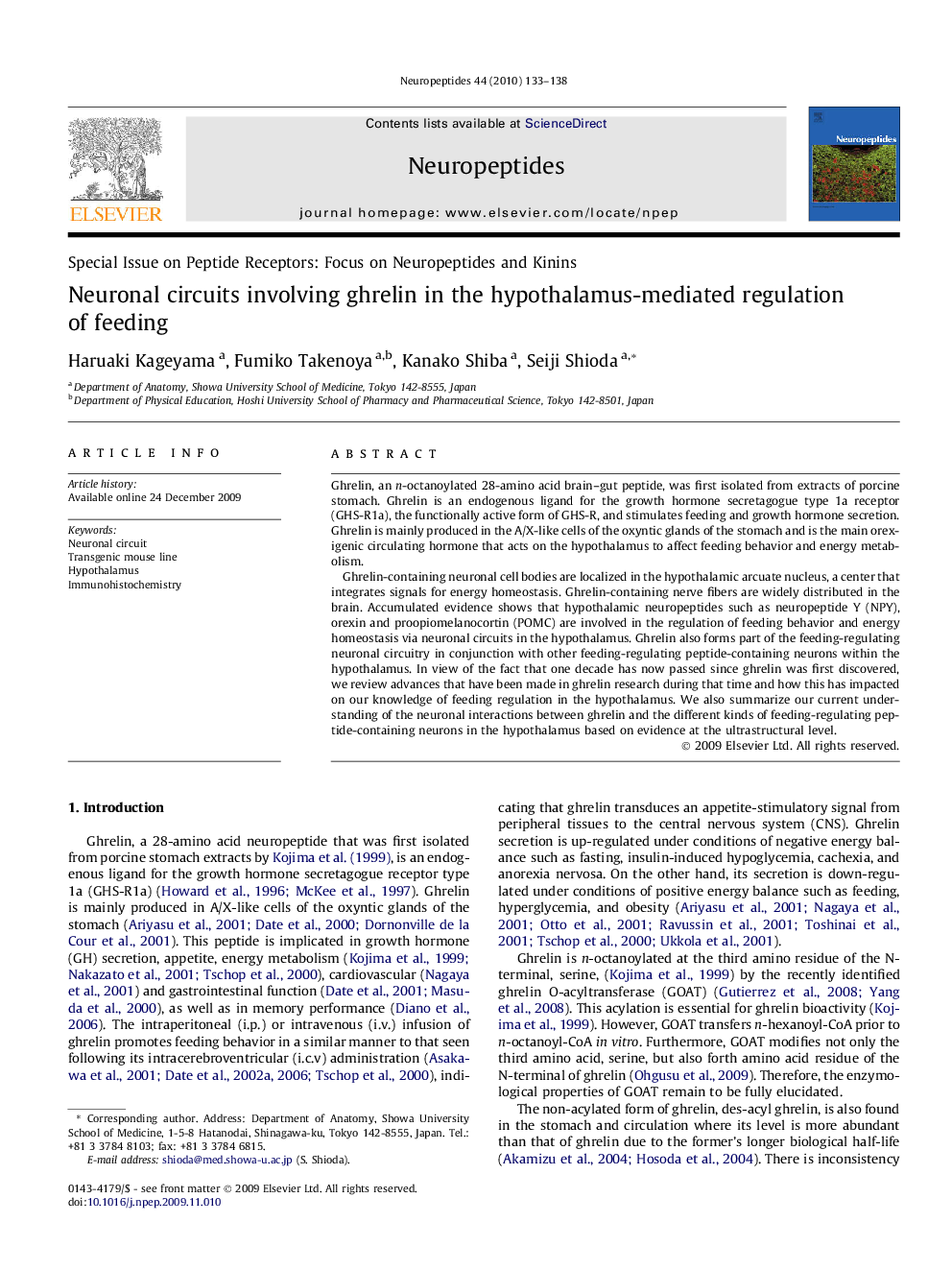| Article ID | Journal | Published Year | Pages | File Type |
|---|---|---|---|---|
| 2808238 | Neuropeptides | 2010 | 6 Pages |
Ghrelin, an n-octanoylated 28-amino acid brain–gut peptide, was first isolated from extracts of porcine stomach. Ghrelin is an endogenous ligand for the growth hormone secretagogue type 1a receptor (GHS-R1a), the functionally active form of GHS-R, and stimulates feeding and growth hormone secretion. Ghrelin is mainly produced in the A/X-like cells of the oxyntic glands of the stomach and is the main orexigenic circulating hormone that acts on the hypothalamus to affect feeding behavior and energy metabolism.Ghrelin-containing neuronal cell bodies are localized in the hypothalamic arcuate nucleus, a center that integrates signals for energy homeostasis. Ghrelin-containing nerve fibers are widely distributed in the brain. Accumulated evidence shows that hypothalamic neuropeptides such as neuropeptide Y (NPY), orexin and proopiomelanocortin (POMC) are involved in the regulation of feeding behavior and energy homeostasis via neuronal circuits in the hypothalamus. Ghrelin also forms part of the feeding-regulating neuronal circuitry in conjunction with other feeding-regulating peptide-containing neurons within the hypothalamus. In view of the fact that one decade has now passed since ghrelin was first discovered, we review advances that have been made in ghrelin research during that time and how this has impacted on our knowledge of feeding regulation in the hypothalamus. We also summarize our current understanding of the neuronal interactions between ghrelin and the different kinds of feeding-regulating peptide-containing neurons in the hypothalamus based on evidence at the ultrastructural level.
